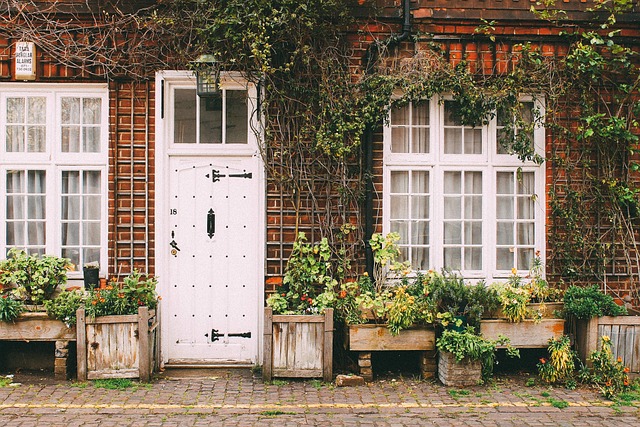Surveilling rural properties requires innovative solutions due to their unique challenges. Solar-powered and wireless surveillance systems, along with long-range cameras and motion-activated sensors, offer efficient, sustainable, and cost-effective rural home security. These technologies enhance outdoor security cameras' effectiveness in remote areas, providing comprehensive coverage while optimizing energy use and privacy. Implement these advanced systems strategically for optimal protection and peace of mind in isolated locations.
In the vast and often isolated landscapes of rural areas, ensuring the security of your property presents unique challenges. Traditional surveillance methods may not be as effective in these regions, prompting a shift towards innovative solutions like drone-assisted surveillance systems. This article explores how drones can transform rural home surveillance, offering enhanced visibility with long-range, wireless cameras, including solar-powered and motion-activated models. We’ll delve into the advantages, camera types, and implementation tips for establishing robust outdoor security in rural areas.
- Understanding the Challenges of Rural Surveillance
- Advantages of Drone-Assisted Surveillance Systems
- Types of Cameras for Optimal Rural Property Security
- Implementation and Maintenance Tips for Long-Term Effectiveness
Understanding the Challenges of Rural Surveillance

Surveilling rural properties presents a unique set of challenges compared to urban or suburban environments. The vast, open spaces mean that traditional security systems often struggle to provide comprehensive coverage. Long-range surveillance cameras are essential here, as they can capture a wide area effectively. However, installing and maintaining these systems in remote locations can be logistically demanding and costly. Solar-powered cameras offer a sustainable solution by harnessing renewable energy, ensuring continuous operation without the need for frequent battery replacements or power connections.
Wireless surveillance is particularly beneficial for rural properties due to its flexibility and ease of installation. It allows for quick deployment and the freedom to position cameras in hard-to-reach areas. Additionally, motion-activated cameras can be highly effective at deterring potential intruders while optimizing energy use by only activating when necessary. These innovative solutions not only enhance outdoor security cameras for rural areas but also contribute to a more efficient and sustainable approach to rural home surveillance systems.
Advantages of Drone-Assisted Surveillance Systems

Drone-assisted surveillance systems offer a myriad of advantages for securing rural properties. One of the key benefits is their ability to cover vast, remote areas with minimal infrastructure. These systems can be deployed wirelessly, eliminating the need for complex cabling, making them particularly suitable for rural homes and properties where traditional security setups may be impractical or costly.
Long-range surveillance cameras equipped with advanced technology ensure comprehensive coverage, capturing detailed footage even in challenging terrain. Solar-powered cameras are also a sustainable option, providing continuous monitoring without requiring frequent battery replacements. Additionally, motion-activated sensors trigger camera operation only when necessary, enhancing efficiency and privacy for rural residents. Such systems can significantly deter potential intruders, offering peace of mind to homeowners in isolated areas.
Types of Cameras for Optimal Rural Property Security

When it comes to securing a rural property, choosing the right camera system is paramount. Outdoor security cameras designed for rural areas should offer long-range surveillance capabilities, capturing clear images from distant points. Wireless surveillance systems are ideal for remote properties as they eliminate the need for complex cabling, making installation simpler and more cost-effective.
For optimal visibility and energy efficiency, consider solar-powered cameras. These devices can be strategically placed around the property and rely on renewable energy, ensuring continuous operation with minimal maintenance. Additionally, motion-activated cameras trigger alerts upon detecting movement, providing an extra layer of security for rural homes. This feature is particularly useful in areas with wildlife or potential intruders.
Implementation and Maintenance Tips for Long-Term Effectiveness

Implementing a drone-assisted surveillance system for your rural property requires careful planning and consideration for long-term effectiveness. Firstly, ensure your chosen equipment is suitable for the specific needs of outdoor security in rural areas—this might include wireless surveillance options for remote properties and long-range cameras with high resolution to capture clear images from far distances. Solar-powered cameras are an eco-friendly option that can be particularly beneficial for consistent power supply without worrying about regular electricity access, common in rural locations.
Regular maintenance is key to keeping your system operational and effective. Schedule routine checks to ensure all devices are functioning correctly, batteries are charged, and storage cards are not full. Motion-activated cameras can help with this by alerting you to any issues or potential security breaches immediately. Remember that remote access to your surveillance footage through the internet also requires a stable connection, so consider your property’s connectivity when choosing equipment and plan for any necessary upgrades or additional infrastructure investments over time.
Drone-assisted surveillance systems offer a revolutionary approach to enhancing rural property security. By leveraging the advantages of aerial technology and incorporating specific camera types like long-range, solar-powered, and motion-activated models, homeowners can effectively safeguard their remote properties. Implementation tips, including proper placement and regular maintenance, ensure these systems remain impactful over time. Adopting wireless surveillance solutions tailored to rural settings empowers individuals to protect their homes and land with advanced technology, fostering greater peace of mind in isolated areas.
